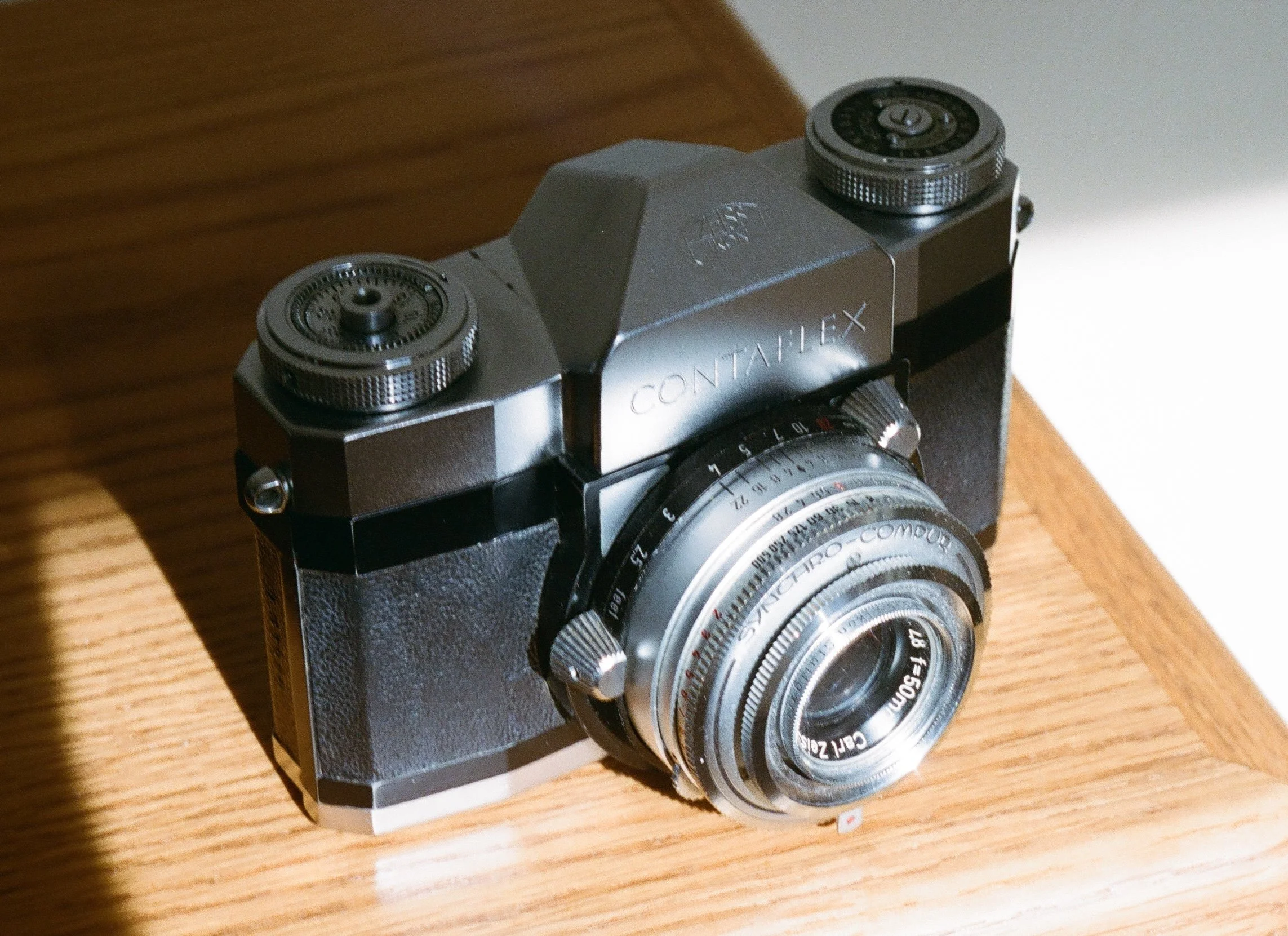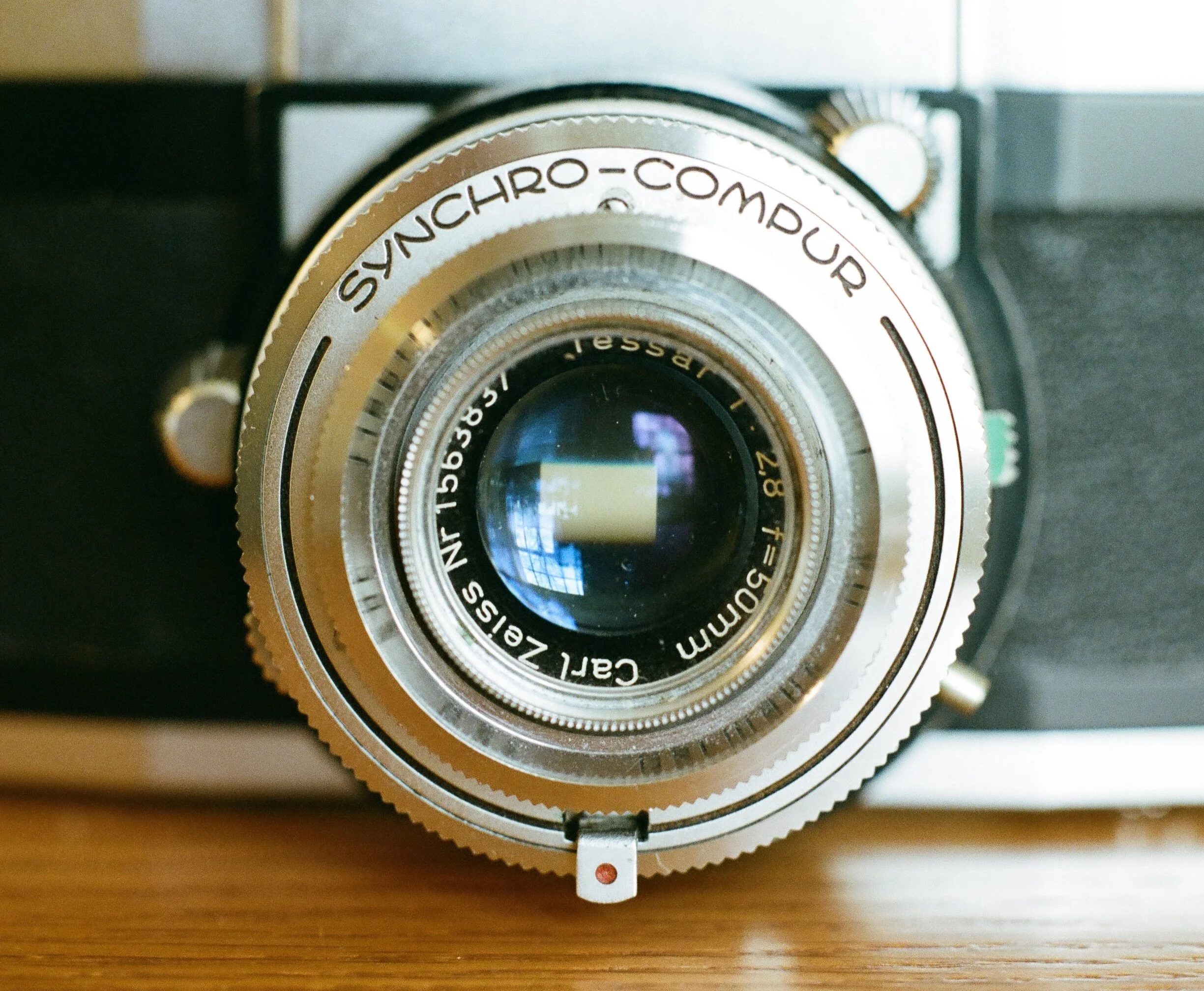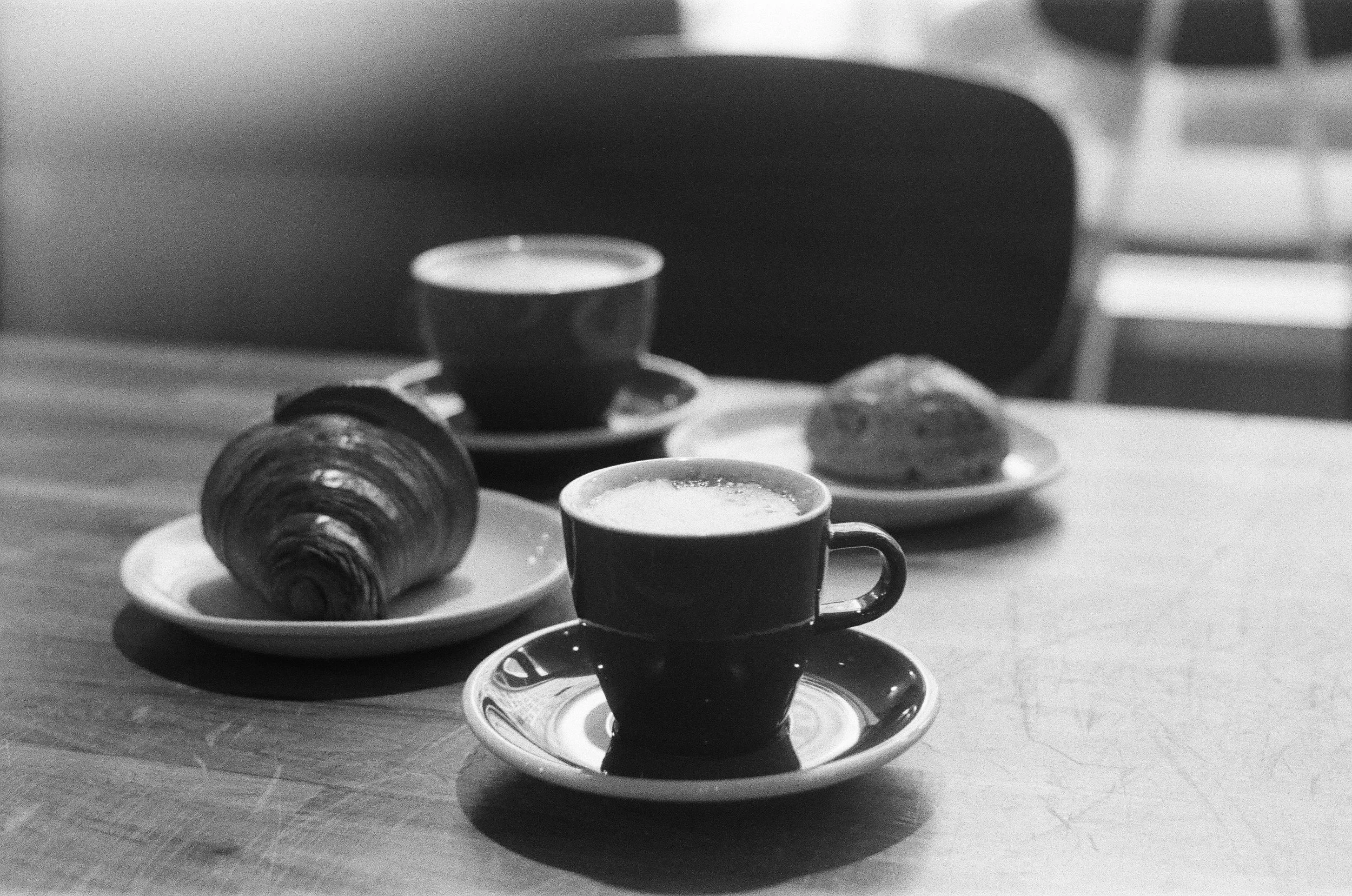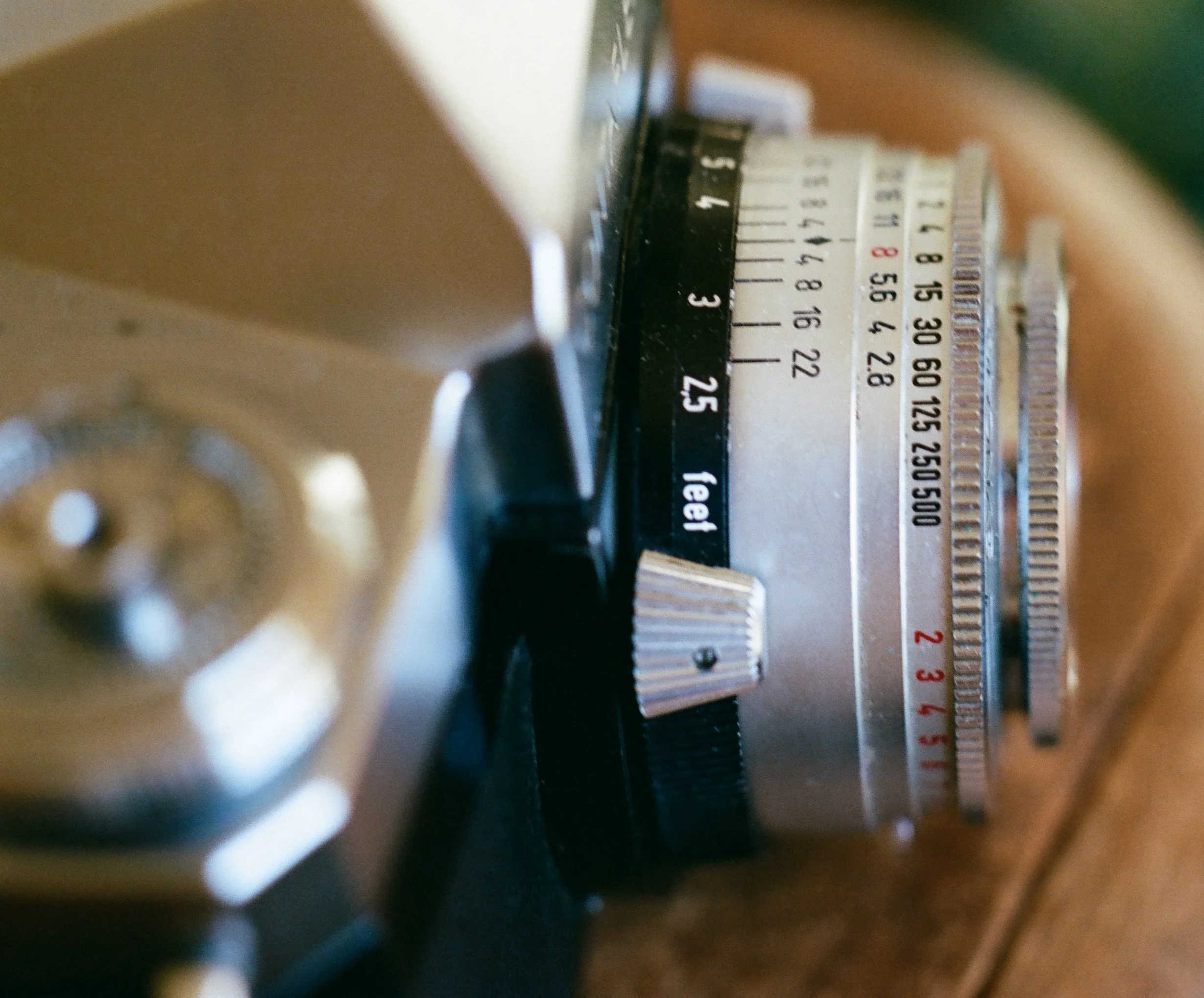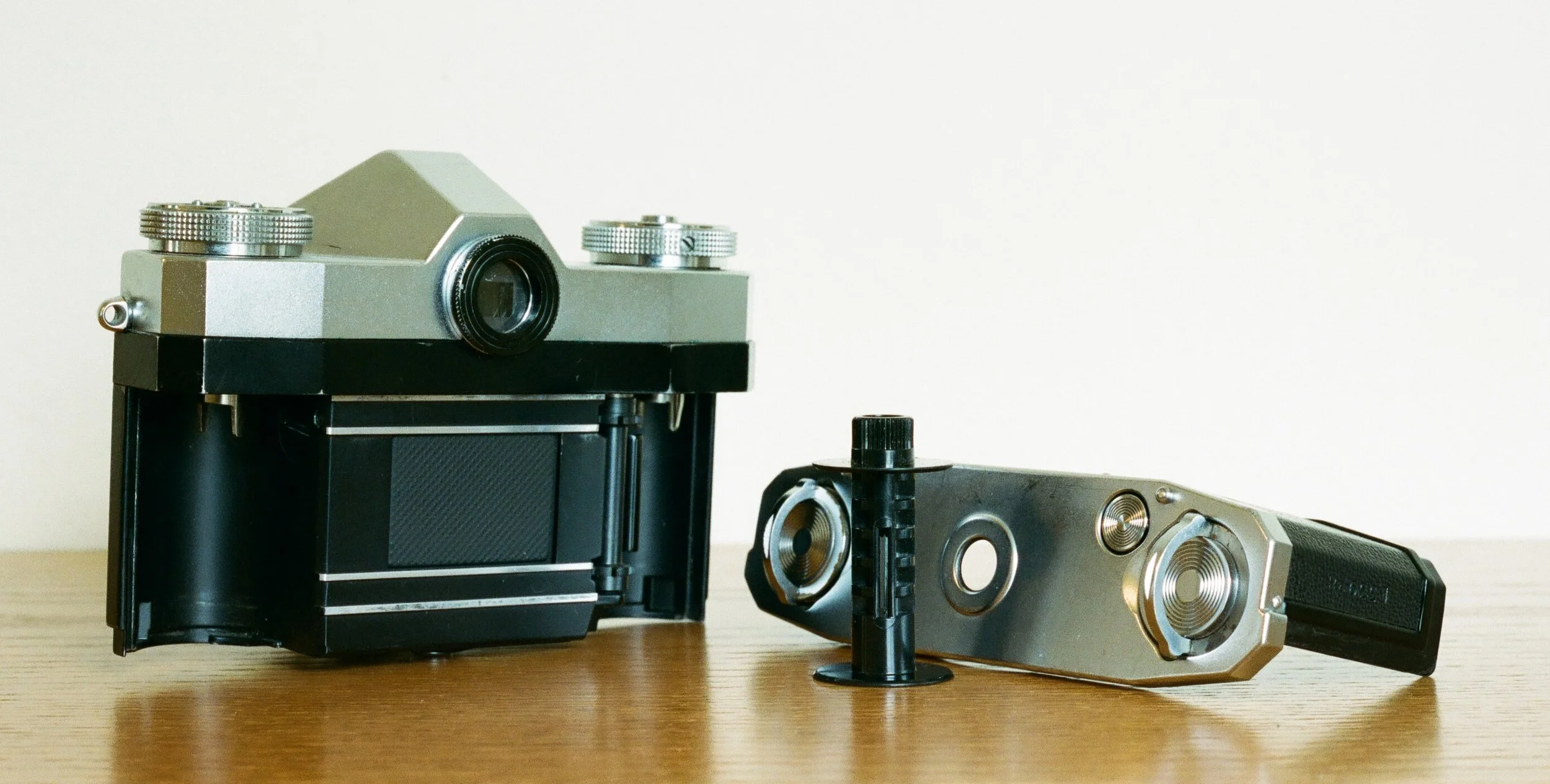Contaflex III
Zeiss Ikon’s compact 35mm SLR.
Zeiss Ikon Contaflex III with 50mm f/2.8 Carl Zeiss Tessar lens. (Color photos of the camera were made with a Nikon F, 55mm f/3.5 Micro-Nikkor-P.C, and Portra 400.)
35mm SLR in the 1950s
The Contaflex is a leaf shutter SLR that was in production from 1953 to 1972, with the Contaflex III variant made from 1957 to 1959 (McKeown, 1996). As a 1950s SLR, it was an innovative design in the pre-Nikon F era, before the 35mm SLR had reached maturity.
At less than half the price of the Leica IIIf and Contax IIa, the target market was advanced amateurs, and professionals for use as a back-up camera (Small and Barringer, 1999). Kind of like, a German 1950s equivalent of Nikon’s Nikkormat line.
Ceremony Coffee Bethesda, Md. Contaflex III, 50mm f/2.8 Carl Zeiss Tessar, FP4+, 2023.
The lens is superb, but not fast. Despite the small maximum aperture, viewing is very bright and focusing is easier than some 1960s Japanese SLRs that lack a split image.
The leaf shutter adds complexity
Leaf shutter SLRs are complex. Because the leaf shutter is forward of the mirror, it has to be open to let light in for framing and focusing. So there is another shutter in the rear, behind the mirror and in front of the film, which is closed, to keep light away from the film. This rear shutter is a door-type of design and is not timed like the front (leaf) shutter.
When the shutter button is pressed, it sets in motion the following series of actions:
Leaf (front) shutter closes
Mirror flips up
Rear shutter opens
Leaf shutter opens and closes (exposing the film)
Upon advancing the film, the rear shutter closes, the mirror returns to its down position, the leaf shutter opens, and the camera is then ready for the next exposure.
Interchangeable lens capability is also more problematic. The leaf shutter is located between lens elements, so each lens normally requires its own shutter (as with a Hasselblad). That adds cost. The alternative is to provide for different focal lengths by interchanging front lens elements only, with the lens elements behind the shutter kept fixed. The Conraflex adopted that design.
Why the leaf shutter?
The leaf shutter design made the Contaflex more compact than focal plane shutter SLRs. But in terms of 35mm SLRs, it was an engineering dead end. Japanese competitors opted for the simpler, more robust, and more flexible focal plane shutter layout and that became the dominant design.
Ceremony Coffee Roasters Bethesda, Md. Contaflex III, 50mm f/2.8 Carl Zeiss Tessar, FP4+, 2023.
My Contaflex is not the most reliable…
The complexity of the Contaflex shutter operation is similar to that of the Hasselblad, but its reliability is not. My Contaflex suffers from intermittent light leaks. The rear shutter does not always close completely and this would definitely fog the film.
Rear shutter closure is easy to test: remove the back, fire the shutter, wind the film advance, and see if the read door closes completely. Mine does not always do so. When I hold the camera facing up while winding, then gravity seems to help the rear shutter close, maybe that’s a practical work-around!
Matanle (1996) likes Contaflexes, describing the original model which is very similar to mine, as ‘a beautifully simple, classically engineered camera capable of superb results’. However, ‘To use Contaflex equipment on a regular basis, you need to be fairly devoted to the marque and prepared to own several and meet repair bills as they arise’ — not encouraging!
The Confaflex has lens-centered controls. Everything’s there, including shutter speed. My Hasselblad is similar. Which makes sense, since they’re both SLRs with Synchro Compur leaf shutters.
… but I like it
When the Contaflex works, maybe 2/3 of the time, the results are excellent. The lens is top notch, and I especially like the viewfinder which is exceptionally bright. It is almost like a rangefinder camera viewfinder, in that only the central portion indicates focus while the rest is crystal clear:
In the center is a horizontal split image, surrounded by a ground glass focusing area. Outside of that is a non-focusing fresnel which is very bright and clear.
The Contaflex is a compact, good looking camera with excellent ergonomics, and it garners more than its share of compliments in public.
Halloween cookies at Breads Unlimited, Bethesda, Md. Contaflex III, 50mm f/2.8 Carl Zeiss Tessar, FP4+, 2023. The store clerk exclaimed, Oh, what a cute camera!
Ready for film loading The rear door-type shutter is visible here, it is in the same location as a focal plane shutter would be. Here, it is in the closed position.
Maintenance and repair
No maintenance yet, but it could use some work as discussed above.
References / further reading
Camera manual: orphancameras.com
More references:
Matanle, I. 1986. Collecting and Using Classic Cameras. London: Thames and Hudson.
Matanle, I. 1996. Collecting and Using Classic SLRs. New York: Thames and Hudson.
McKeown, J.M. and J.C. 1996. McKeown’s Price Guide to Antique and Classic Cameras, 1997-1998. Grantsburg, Wis.: Centennial Photo.
Small, M.J. and C.M. Barringer. 1999. Zeiss Compendium: East and West — 1940-1972, 2nd ed. West Sussex, England: Hove.
